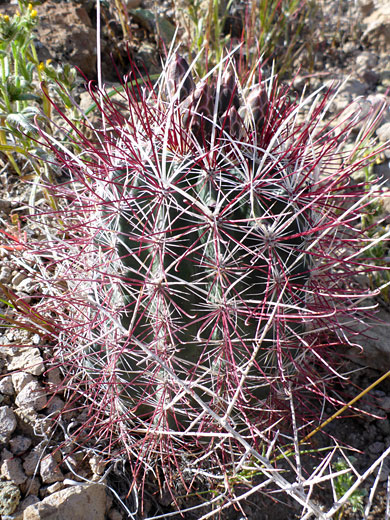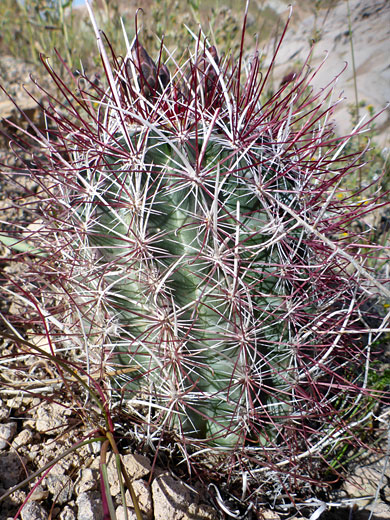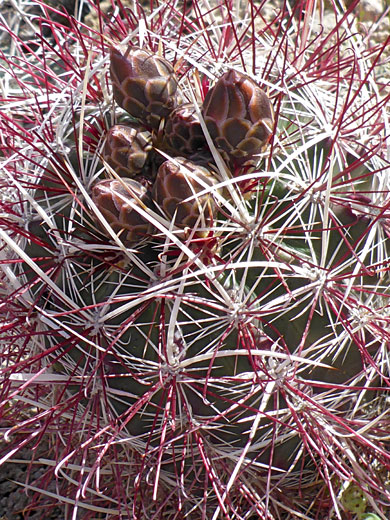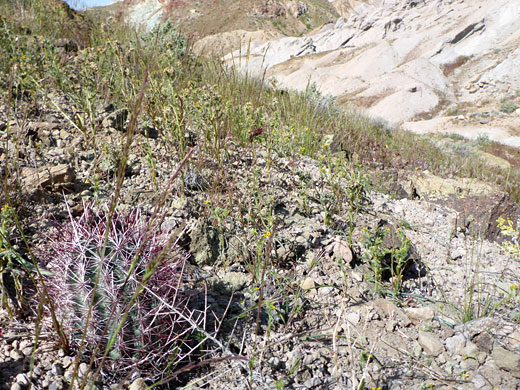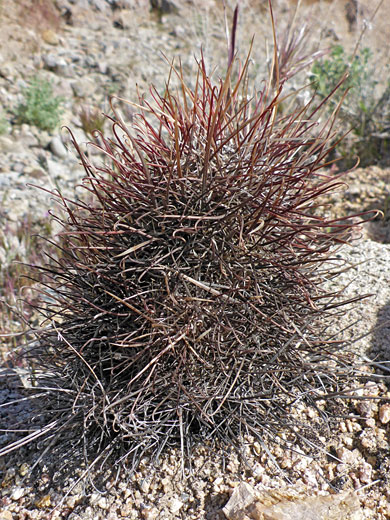Scientific name:
Sclerocactus polyancistrus
Common name:
Mojave fishhook cactus, redspine fishhook cactus
Range:
The Mojave Desert of California, extending north into the southern Great Basin Desert of Nevada
Form:
Unbranched cylinders, up to 17 inches tall
Habitat:
Joshua tree woodland, alluvial fans, rocky places in deserts, frequently on alkaline substrates
Flowers:
Funnel-shaped, pink to magenta, blooming April to June

Distribution map for sclerocactus polyancistrus
Sclerocactus polyancistrus, the Mojave fishhook cactus, is the largest member of the genus, up to 17 inches tall and 3.5 inches across, and quite distinctive, the dark green stems mostly obscured by a dense covering of spines, white and bright red. Stems have between 13 and 17 ribs
Each areole has between 10 and 15 white radial spines, up to 2 inches in length, and from 9 to 12 central spines. Of these, the upper three (adaxial) are usually white, up to 4 inches long, flattened in cross-section, and curved, but not hooked, while the lower and lateral central spines (6 to 9) are red and a little shorter; all or most are hooked.
Flowers are typically large, up to 2 inches across, and showy. Tepals are rose pink to magenta, the outer ones with greenish midstripes. Occasionally the tepals are all-white. Stamens have yellow-green filaments and creamy-yellow anthers.
Each areole has between 10 and 15 white radial spines, up to 2 inches in length, and from 9 to 12 central spines. Of these, the upper three (adaxial) are usually white, up to 4 inches long, flattened in cross-section, and curved, but not hooked, while the lower and lateral central spines (6 to 9) are red and a little shorter; all or most are hooked.
Flowers are typically large, up to 2 inches across, and showy. Tepals are rose pink to magenta, the outer ones with greenish midstripes. Occasionally the tepals are all-white. Stamens have yellow-green filaments and creamy-yellow anthers.
All Contents © Copyright The American Southwest | Comments and Questions | Contribute | Affiliate Marketing Disclosure | Site Map
